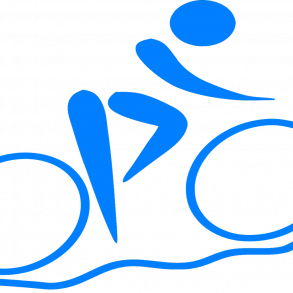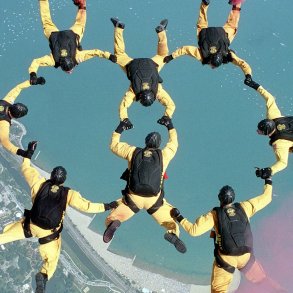By Lauren Tenney for Enlivening Edge Magazine
A big ah-ha from the field: successful self-management depends on this crucial factor

Many teams and organizations, especially in the last few years since the rise of Holacracy and the popularity of Reinventing Organizations, are transitioning to self-management—or at least sniffing around the possibility.
There isn’t one recipe for successful self-management, but there are essential principles that define it. Self-management is, at its core, about the distribution of power and authority—and by extension, the distribution of creative control, leadership, and ownership. Instead of a pyramid-shaped diagram on paper, self-managing organizations look more like a mind-map—a web of interconnected circles
We’ve been working with a client who is transitioning into a self-managing structure, and in the process, one insight in particular has become exceptionally clear. The “we” is Ten Directions, the home of innovative and unparalleled programs in leadership, facilitation, coaching, and mentorship.
When you transition from a governance structure which locates power and authority in a few places, to a structure in which it is distributed between individuals and teams, what you are really doing is shifting the burden of effective process to the space between people.
In traditional hierarchies, process is simplified (and constrained) by the flow of authority upwards. Who does what, and when, is prescribed by role, and role is synonymous with power. When in doubt, decision-making goes upwards, and the implicit decision rule is usually “person with most power decides.”
In self-managing environments, decision-making no longer lives inside one individual, but shifts to sit between individuals. Autonomy surely exists, and we don’t mean to imply that it disappears in self-managing cultures (of which there are a wide variety)—but the difference is, even when individuals do take autonomous action, the process they employ to get there is participatory, transparent, and depends upon engagement with other stakeholders.
A whole host of new questions pop up as a result.
“How do we keep the process from going off the rails?”
“How do we know we’ve made a decision?”
“Who makes the decision in which context?”
“What do we do to handle conflict and disagreement?”
“How do we stay open to feedback without continuously revisiting all of our decisions?”
“How to we remain efficient?”
These are process questions. And they all point to one crucial variable for successful self-management: skilled facilitation.
Let’s pause here for a moment, because “facilitation” often has a lame connotation which is important to dispel. For many people, especially in fast-paced environments, “facilitator” conjures up cliched images of timid neutrality, or perhaps worse, a slow, steady, boring, touchy-feely process-heavy experience. This is not the kind of facilitation we’re referring to.
Facilitation, or facilitative leadership, is the dynamic and effective ability to move a process along in the most inclusive, focused, energized and alive way possible.
It can be done explicitly by anyone in a facilitator role, or it can be done implicitly through skilled intervention and influence by group members. It can happen formally within a time-bound meeting, or it can happen subtly over a long period of time as interventions and influence accumulate towards successful action.
True facilitation isn’t merely or ultimately about helping people get along or play nice. It is an absolutely essential, ninja-like ability to drive process of any kind. Driving process means bringing people along and bringing them together in a way that works for everyone and yields results.
It’s the ultimate foundation of collaboration and self-management.
This points to the big ah-ha alluded to earlier: successful self-management requires facilitative competency.
And more to the point, not just a standard grasp of the 1-2-3’s of taking people through a meeting. In self-managing environments, the complex demands around facilitative competency shoot way up. Hierarchy is no longer standing by to provide the go-to answers when we aren’t sure how to decide. What was once prescribed by structure is now emergent. And to facilitate emergence, individuals must develop their intervention skills, awareness, sensitivity, and presence at a whole new level.
In a self-managing environment, facilitative competency can and should be possessed by many. Skilled facilitators are worth their weight in gold—but they needn’t be regarded as the new “magician” of the workplace. Anyone can invest in developing their understanding of group process, interpersonal dynamics, subtle unspoken patterns in culture. Anyone can learn how to engage those in a way which wakes people up and yields results. These are the skills of the interventionist, and the responsibility to bring them into our self-managing teams belongs to all of us.
Ten Directions is offering an online program focusing on exactly this area. Taught by the incredibly gifted teacher and author Diane Musho Hamilton, the program will address the essential skills that can transform how we relate and communicate everyday.
In This Together: Communication Wisdom for the World of Work [link updated to be relevant 2019] will be an 8-week online course, tailored for anyone whose work and life would benefit from refined communication and relational skills—especially those who care about what’s required for self-management and thriving collaboration.

Lauren Tenney is a Senior Consultant, Editor, and Director of New Program Development for Ten Directions. She is a member of the Integral Facilitator training staff and a certified graduate of the Integral Facilitator Certificate Program. For the past ten years she has been immersed in the fields of human development, transformative learning, integrative systems, strategic communications and small business development. Lauren is experienced with many of today’s most innovative tools for transformation and collaboration. As a facilitator, she loves helping people relate with more freedom and joy.





I feel an excitement building in me, similar to the first day of school. At this very moment, I’m in the airport, waiting to board my plane to Halifax for the Next-Stage Facilitation intensive, the precursor to the certificate program. After years of working and playing in the writing cave and developing next-stage-writing, I feel called to facilitate writing workshops and courses. This is a big step for me. It takes me out of my comfort zone. I can hardly wait to see all of you beautiful people who are bringing this work into the world, and see to what happens next.
Edith! It was so wonderful to have you with us bringing you brightness and enthusiasm to the 3 days. Thank you so much for being willing to come step out of your comfort zone with us 🙂 Lots of love and excitement for what’s to come!
I love this article, I was thinking Yes, Yes, Yes throughout the whole thing. I have been facilitating this way and also teaching others to facilitate this way for the past 10 years and will use many of these quotes — to talk to people about how this type of facilitation is different from what they are used to. Thanks!
Loved the intensive! I went for the facilitation skills and returned with way more than I expected. What strikes me now is the value of this approach for leaders in next-stage organizations. For example, working skillfully with polarities like group coherence and group energy is key to an organization’s movement forward. The question is: when and how do we heighten each for maximum advantage? Here’s something else: how do we unleash the enormous creative energy that’s hidden within group or organizational shadow? And the big one: how do we engage in the relational space of an organization without getting caught in it? Diane’s mastery, modelling, and unpacking of these dynamics blows me away.